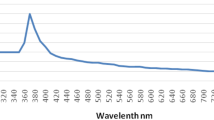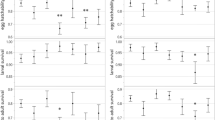Abstract
Corcyra cephalonica (S.) commonly called rice meal moth or rice moth is an important stored-product pest all over the world. The larvae feed on broken grains of cereal, pulses, oilseeds, dried fruits, nuts, and spices by constructing the silken webs. The excessive use of pesticides and chemical compounds used for the management of this pest led to the development of resistance and also harms the environment. To overcome these problems in the recent years, green nanotechnology has emerged as a promising tool for pest control. The present study of the experiment was conducted at the Centre for Nanotechnology Laboratory, UAS, Raichur. The green nanoparticles of zinc, copper, and silica were biosynthesized from Spinach leaves; tulasi leaves and paddy husk respectively, and these nanoparticles were characterized by Zetasizer, UV–Vis spectroscopy, X-ray diffraction (XRD), and Scanning electron microscope (SEM). The biophysical characterization revealed that the zinc, copper, and silica nanoparticle has Spindle, spherical, and agglomerated spindle-shaped with a mean particle size of 87.94, 84.15 and 23.65 d. nm respectively. The pesticidal effects of these green nanoparticles were used as stored product insect protectants compared to malathion as a standard reference. Data obtained from different concentrations (250, 500, 750, 1000, 1250, and 1500 ppm) of zinc, copper, and silica green nanoparticles indicated that the increase in concentration and exposure period resulted in increase in larval mortality, pupal mortality and adult deformity. Among the different concentrations, 1500 ppm of zinc, copper, and silica nanoparticles proved to be superior. Similarly, of the different nanoparticles, silica nanoparticles excelled followed by zinc and copper nanoparticles.





Similar content being viewed by others
References
Amrita R, Reena SL, Mohammad J, Kapil L (2015) Antibacterial activity of Zinc oxide nanoparticles prepared from Brassica oleraceae leaves extract. Int J Adv Res 3:322–328
Attia RG, Rizk SA, Hussein M, Fattah HMA, Ma’moun KMM, SA (2020) Effect of cinnamon oil encapsulated with silica nanoparticles on some biological and biochemical aspects of the rice moth, Corcyra cephalonica (Staint.)(Lepidoptera: Pyralidae). Annal Agri Scie 65:1–5
Awwad AM, Albiss B, Ahmad AL (2014) Green synthesis, characterization and optical properties of Zinc oxide nanosheets using Olea europea leaf extract. Adv Mat Lett 5:520–524
Chakravarthy AK, Chandrashekharaiah SB, Kandakoor A, Bhattacharya K, Hanabala KG, Ramesh P (2012) Bio efficacy of inorganic nanoparticles CdS, nano-Ag and nano-TiO2 against Spodoptera litura (Fabricius) (Lepidoptera: Noctuidae). Current Biotica 6:271–281
Chinnamuthu CR, Murugesa BP (2009) Nanotechnology and Agroecosystem. Madras Agric J 96:17–31
Das D, Yang Y, Brien JSO, Breznan D, Nimesh S, Bernatchez S, Hill M, Sayari A, Vincent R, Kumarathasan P (2014) Synthesis and physicochemical characterization of mesoporous SiO2 nanoparticles. J Nanomater 62:11–12
Debnath N, Das S, Seth D, Chandra R, Bhattacharya SC Goswami A (2011) Entomotoxic effect of silica nanoparticles against Sitophilus oryzae (L.). J Pest Sci 84:99–105
Djangang CN, Mlowe S, Njopwouo D, Revaprasadu N (2015) One-step synthesis of silica nanoparticles by thermolysis of rice husk ash using nontoxic chemicals ethanol and polyethylene glycol. J Applicable Chem 4:1218–1226
Fatma S, Kalainila P, Ravindran E, Renganathan S (2017) Green synthesis of copper nanoparticle from Passiflora foetida leaf extract and its antibacterial activity. Asian J Pharm Clin Res 10:79–83
Gnanasangeetha D, Thambavani SD (2014) Facile and eco-friendly method for the synthesis of Zinc oxide nanoparticles using Azadirachta and Emblica. Int J Pharm Sci Res 5:2866–2873
Hariprasad S, Bai GS, Santhoshkumar J, Madhu CH, Sravani D (2016) Green synthesis of copper nanoparticles by Arevalanata leaves extract and their antimicrobial activities. Int J Chem Tech Res 9:98–105
Kumar KM, Tambe VJ, Rehaman SK, Choudhuri BN, Thakur KD (2018) Effect of different diets on the biology of rice moth, Corcyra cephalonica (Stainton). J Entomol Zool Stud 6:251–254
Lee HJ, Lee G, Jang NR, Yun JH, Song JY, Soo B (2011) Biological synthesis of copper nanoparticles using plant extract. Bioprocess Bio Syst Eng 1:371–374
Mekal J, Rajan MR, Ramesh R (2016) Green synthesis and characterization of copper nanoparticles using tulsi (Ocimum sanctum) leaf extract. Indian J Res 5:14–16
Noorjahan CM, Shahina SKJ, Deepika T, Rafiq S (2015) Green synthesis and characterization of Zinc oxide nanoparticles from Neem (Azadirachta indicia). Int J Sci Eng Technol Res 4:5751–5753
Rafiee E, Shahebrahimi S, Feyzi M, Shaterzadeh M (2012) Optimization and characterization of nanosilica produced from rice husk (common waste material). Int Nano Lett 2:1–8
Saranyaadevi K, Subha V, Ernest RS, Renganathan S (2014) Synthesis and characterization of copper nanoparticle using Capparis zeylanica leaf extract. Int J Chem Tech Res 8:4533–4541
Siva C, Santoshkumar M (2015) Pesticidal activity of eco-friendly synthesized silver nanoparticles using Aristolochia indica extract against Helicoverpa armigera (Lepidoptera: Noctuidae). Int J Adv Scie Res 5:2249–9954
Supraja N, Prasad NV, Krishna TG, David E (2015) Synthesis, characterization and evaluation of the antimicrobial efficacy of Boswellia ovalifoliolata stem bark-extract-mediated Zinc oxide nanoparticles. Appl Nanosci 6:581–590
Vani C, Brindhaa U (2013) Silica nanoparticles as nanocides against Corcyracephalonica(s.), the stored grain pest. Int J Pharm Bio Sci 4:1108–1118
Vidya C, Hiremath S, Chandraprabha MN, Antonyraj LMA, Gopal IV, Jain A, Bansal K (2013) Green synthesis of ZnO nanoparticles by Calotropis gigantean. Int J Curr Eng Technol 1:118–120
Wahab RA, Anwar EM (2015) The effect of direct and indirect use of nanoparticles on cotton leafworm, Spodoptera littoralis. Int J Chemi Bio Sci 1:17–24
Zainala NA, Shukor SRA, Wabb HAA, Razak KA (2013) Study on the effect of synthesis parameters of silica nanoparticles entrapped with rifampicin. Chem Eng 32:432–440
Author information
Authors and Affiliations
Corresponding author
Rights and permissions
About this article
Cite this article
Biradar, W., Nadagouda, S., Aralimarad, P. et al. Entomotoxic effect of green nanoparticle an alternate strategy for stored grain pest management. Int J Trop Insect Sci 41, 2829–2840 (2021). https://doi.org/10.1007/s42690-021-00465-z
Received:
Accepted:
Published:
Issue Date:
DOI: https://doi.org/10.1007/s42690-021-00465-z




